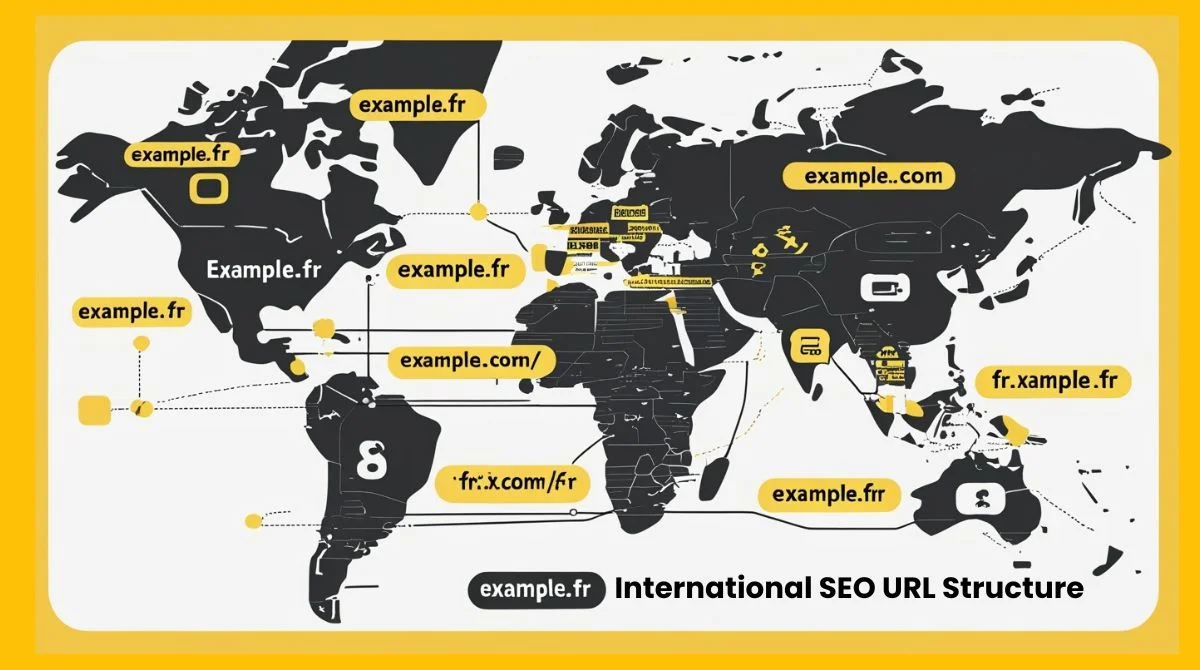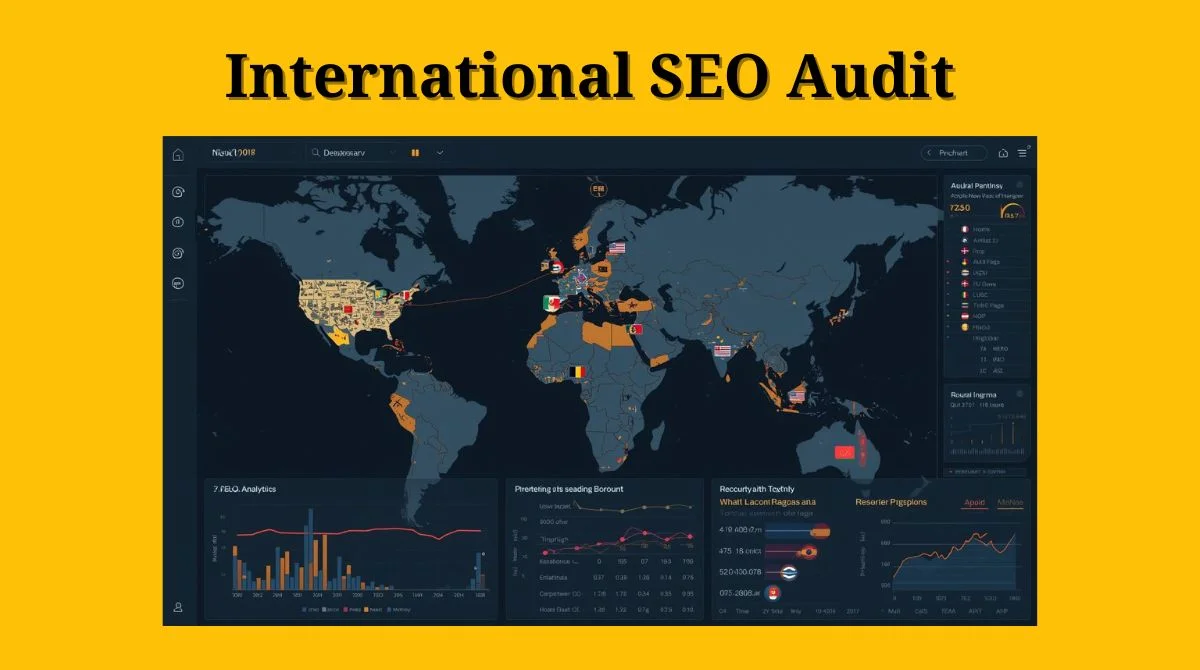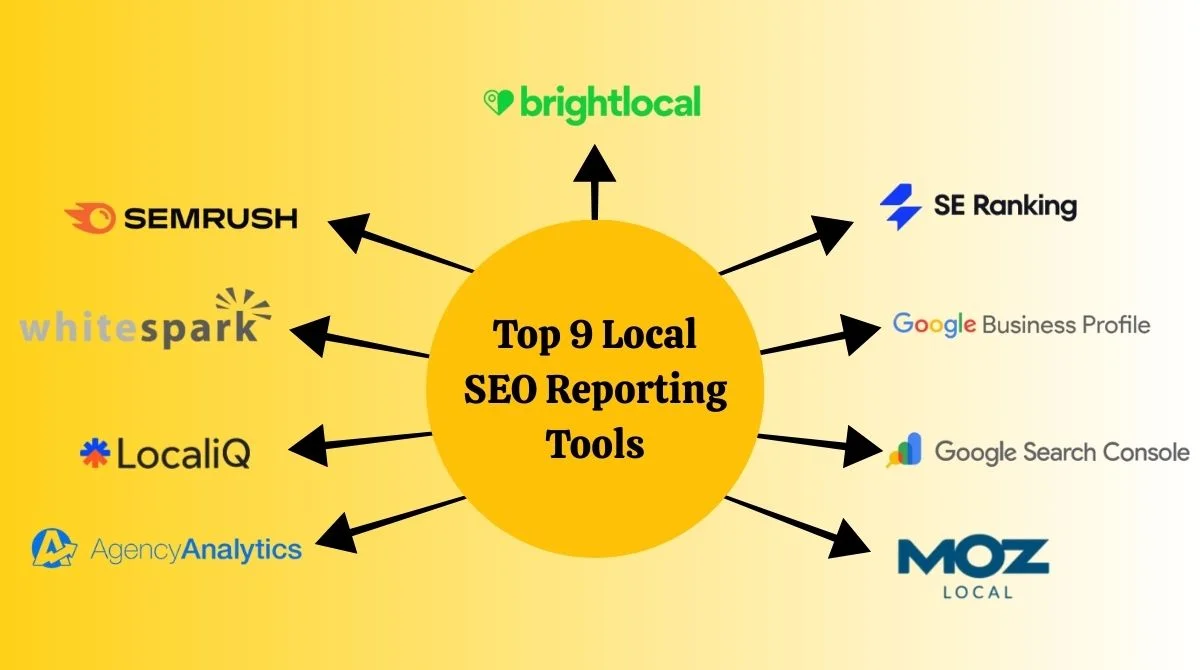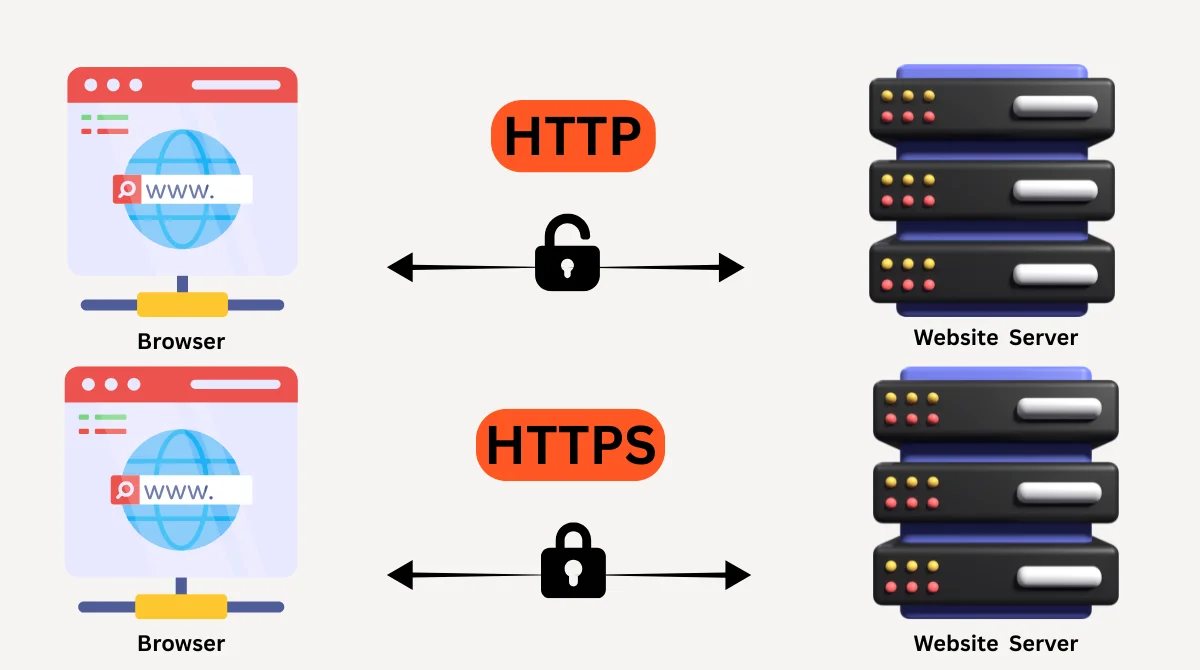Creating fresh and useful content is the key to success in today’s digital world. But many creators, bloggers, and marketers struggle to find new topics. One powerful tool that can help you discover endless content ideas is Google Trends. This free tool by Google shows you what people are searching for online, how their interests change over time, and which topics are gaining popularity.
In this detailed guide, we will explain step by step how you can use Google Trends to find content ideas, optimize your blog, YouTube, or social media, and stay ahead of competitors. Whether you are a beginner or a professional digital marketer, this guide will help you turn Google Trends data into smart content strategies.
What is Google Trends?

Google Trends is a free online tool by Google that shows the popularity of search terms over time. It uses real search data from people all over the world. You can see whether a topic is rising or falling in interest, and you can also compare multiple search terms to know which one is more popular.
Some key features of Google Trends include:
- Popular search queries and trending topics.
- Interest by country, city, or region.
- Related searches and topics.
- Historical search data from 2004 to the present.
- Real-time search data on breaking news and events.
This makes Google Trends a goldmine for bloggers, content creators, YouTubers, SEO specialists, and marketers.
Why Use Google Trends for Content Ideas?
It’s important to understand what people are searching for before you start creating content. Google Trends helps you create content that people actually want to read, watch, or share. Here’s why it’s powerful:
- Spot trending topics: Find out what’s popular right now and create content before others do.
- Understand audience interests: See what your target audience cares about in different regions.
- Seasonal content planning: Discover topics that rise in specific months or seasons (e.g., “Christmas recipes” in December).
- Compare keyword popularity: Know which keyword is better to target for SEO.
- Stay ahead of competitors: Use trends to create fresh content before your competitors catch up.
How to Use Google Trends for Content Ideas?
Let’s go step by step on how you can use Google Trends effectively.
1. Start with a Broad Keyword
The first step in using Google Trends for content ideas is to begin with a broad keyword related to your niche. This helps you get a clear picture of how people search for that term over time and whether it is worth creating content around.
For example, in the image above, the keyword “workout” is typed into Google Trends. You’ll be able to view several key settings and results:
- Location (United States): You can choose the country or region you want to target. In this case, the keyword trend is analyzed for the United States. This is useful if your content focuses on a specific audience.
- Time Range (Past 12 Months): You can select how far back you want to check interest. Here, the time frame is set to the past 12 months, giving an idea of the keyword’s performance over a year. You can also choose options like “past 7 days,” “90 days,” or even “2004–present” for long-term insights.
- Category and Search Type: You can refine results by selecting categories (e.g., Health, Sports, Fitness) and platforms (e.g., Web Search, YouTube Search, News Search). This helps you narrow results to your exact content type.
- Interest Over Time Graph: The line chart shows how search interest for “workout” has changed over the last 12 months. The numbers don’t represent exact search volume but are scaled from 0 to 100, where 100 is the peak popularity. In this graph, interest in “workout” has regular ups and downs but overall remains high, proving it’s a strong topic.
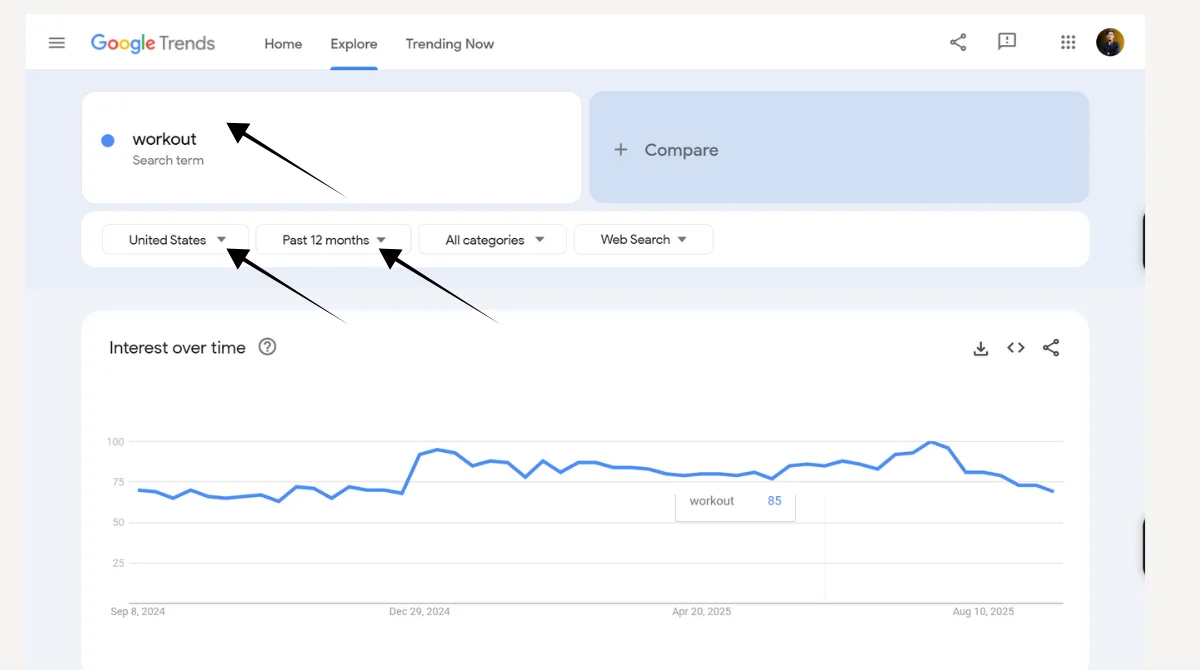
By looking at this chart, you can decide whether the keyword is growing, stable, or declining. If you notice the trend is upward or consistent, it means people are actively searching for it, making it a great opportunity for creating content such as blog posts, YouTube videos, or social media updates.
2. Explore Related Topics and Queries
After entering your keyword, scroll down to see “Related topics” and “Related queries.” These sections show you what else people search for, along with your keyword.
For example, if you searched “workout,” related queries may include:
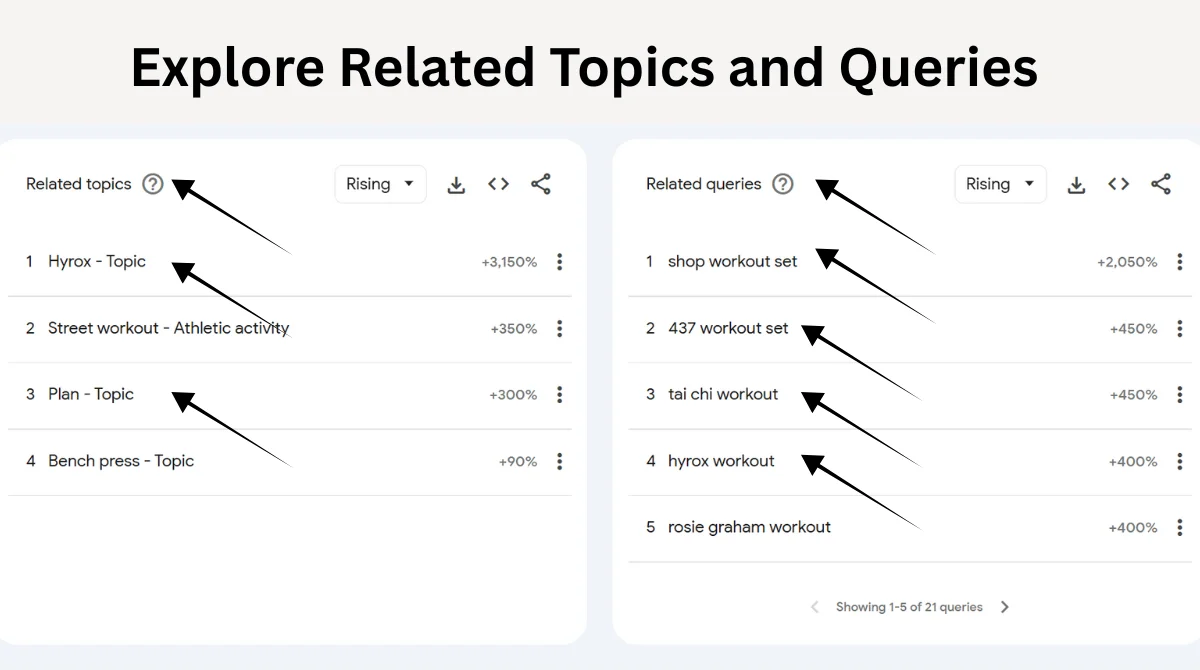
- shop workout set
- tai chi workout
- hyrox workout
- Workout for beginners
Each of these can be a new blog post, YouTube video, or social media content idea.
3. Compare Keywords for Better SEO
Google Trends provides the ability to compare up to five keywords simultaneously, enabling a data-driven approach to keyword selection.
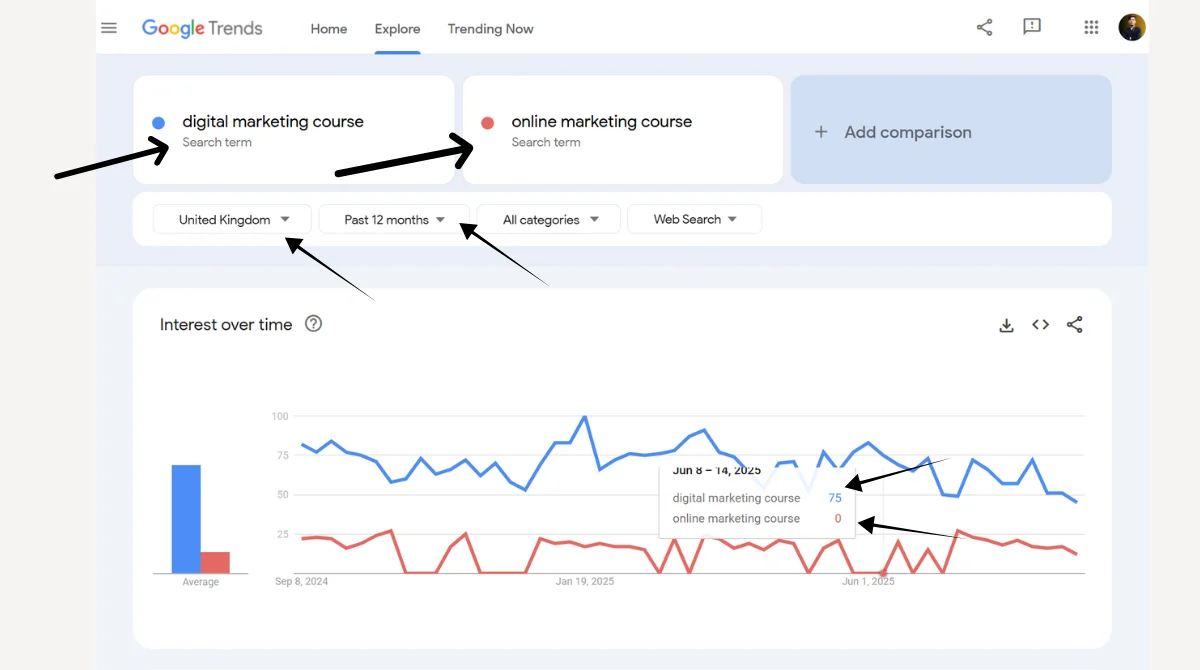
In the example shown, the terms “digital marketing course” and “online marketing course” are compared. The graph indicates that “digital marketing course” consistently demonstrates higher search interest in the United Kingdom over the past 12 months.
By leveraging this insight, you can prioritize keywords with stronger performance, ensuring that your content aligns with audience demand and improves overall SEO effectiveness.
4. Use Google Trends for Seasonal Content
Some topics are seasonal. For example:
In February, online searches increase significantly as people look for gift ideas to celebrate Valentine’s Day. If you check the past 12 months’ data in the USA on Google Trends, you’ll notice that February consistently records the highest search interest for these queries.
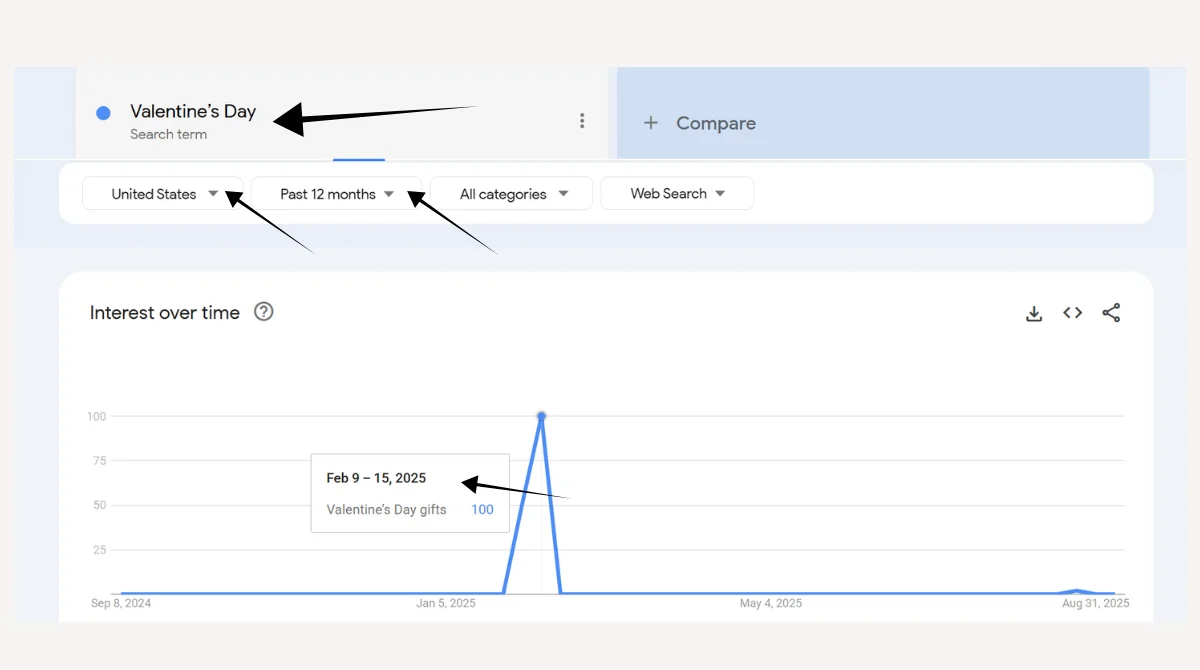
During November, search activity rises sharply as shoppers actively look for the best Black Friday discounts and promotions. If you check the past 12 months of data in the United States on Google Trends, you’ll notice that search interest reaches its highest point in November, showing the clear impact of this shopping season.
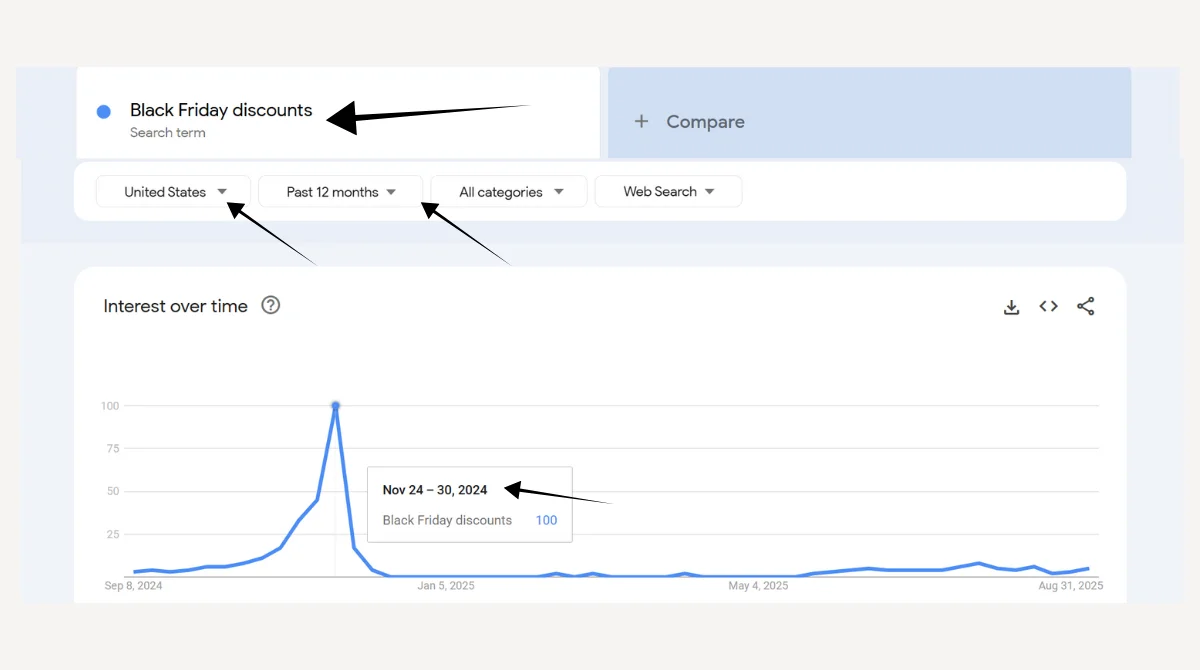
In May and June, many people start searching for vacation plans and travel inspiration. If you check the past 12 months in the USA on Google Trends, you’ll notice that June records the highest number of searches, showing the strong demand for summer holidays and the importance of timely content.
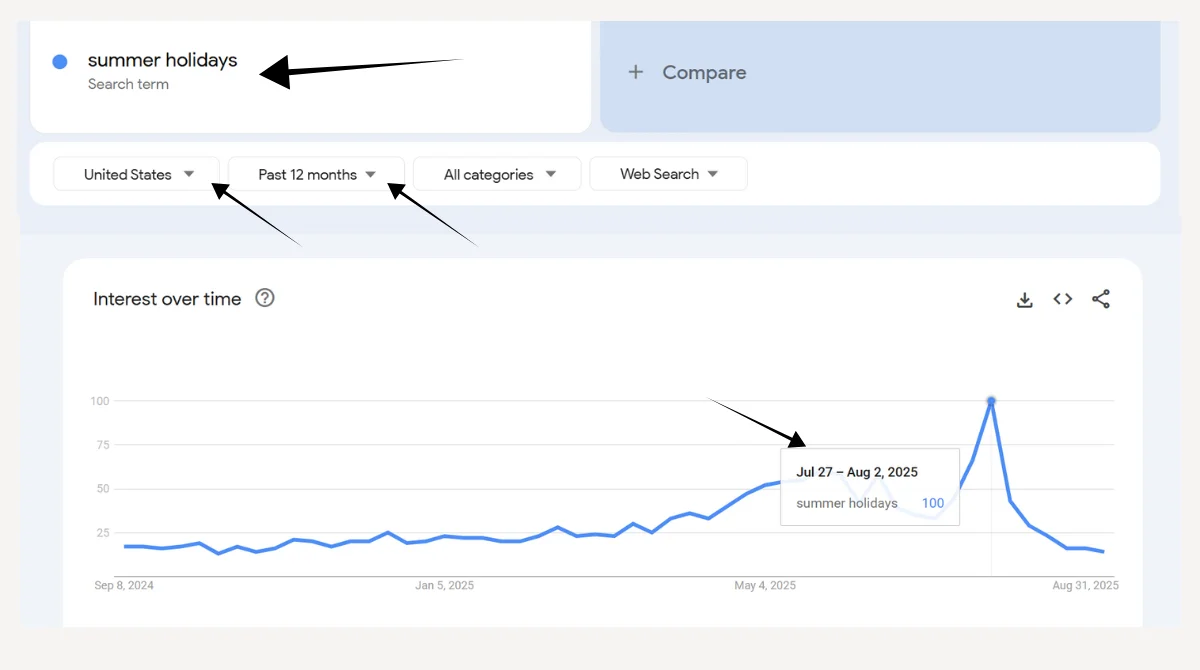
By checking these patterns in Google Trends, you can prepare your content before the season comes. This ensures that your article or video ranks at the right time when people start searching.
5. Check Trends by Location
If you target a specific country or city, Google Trends helps you see what people in that location are searching for.
For example, if you run a travel blog, you can explore what people in Canada have been searching for over the past 12 months. During summer, you might find that “best camping spots in Canada” is searched more often than “beach vacation.” This insight helps you create content that matches real user interests.
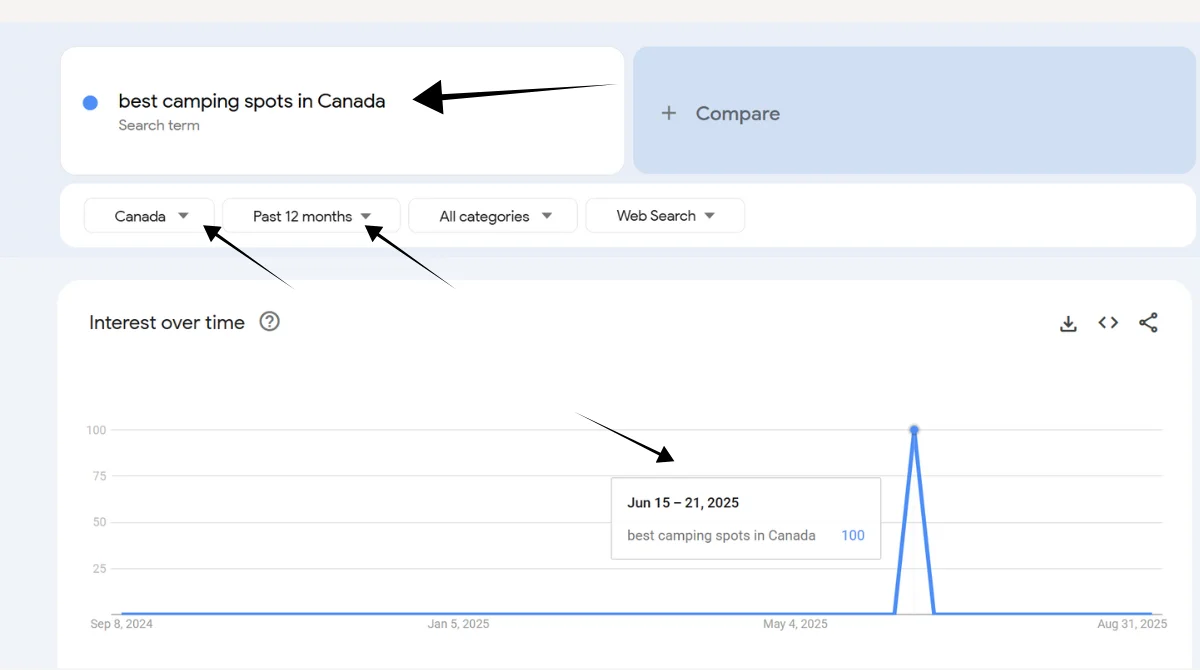
Before producing content, it’s essential to know what people are looking for online.
6. Use Real-Time Data for Hot Topics
Google Trends also has a section for real-time trending searches. These are the latest searches happening right now, based on breaking news, events, or viral topics.
For example, if a new iPhone is released, “iPhone 17 features” may suddenly trend. If you write or create a video quickly, you can capture traffic from this hot topic.
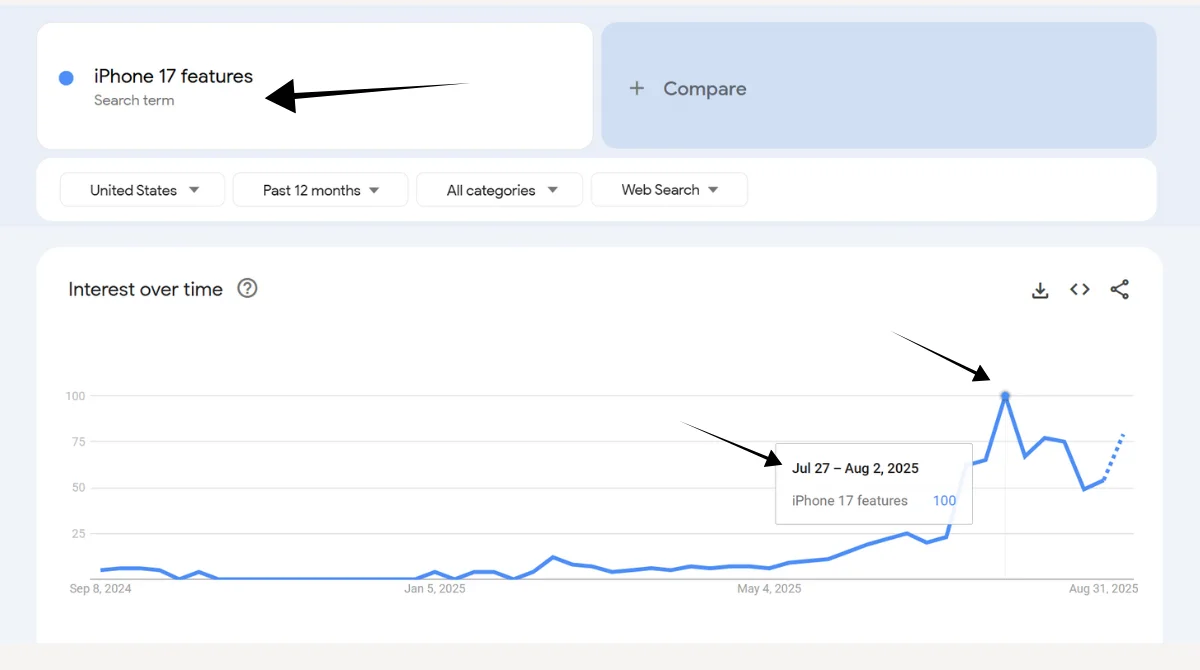
7. Find Long-Tail Keywords
Many times, short keywords are too competitive. Google Trends helps you identify long-tail keywords, which are longer and more specific search terms.
Example: Instead of just “workout,” you may find trending queries like “workout for beginners at home without equipment.” These are easier to rank and bring more targeted visitors.
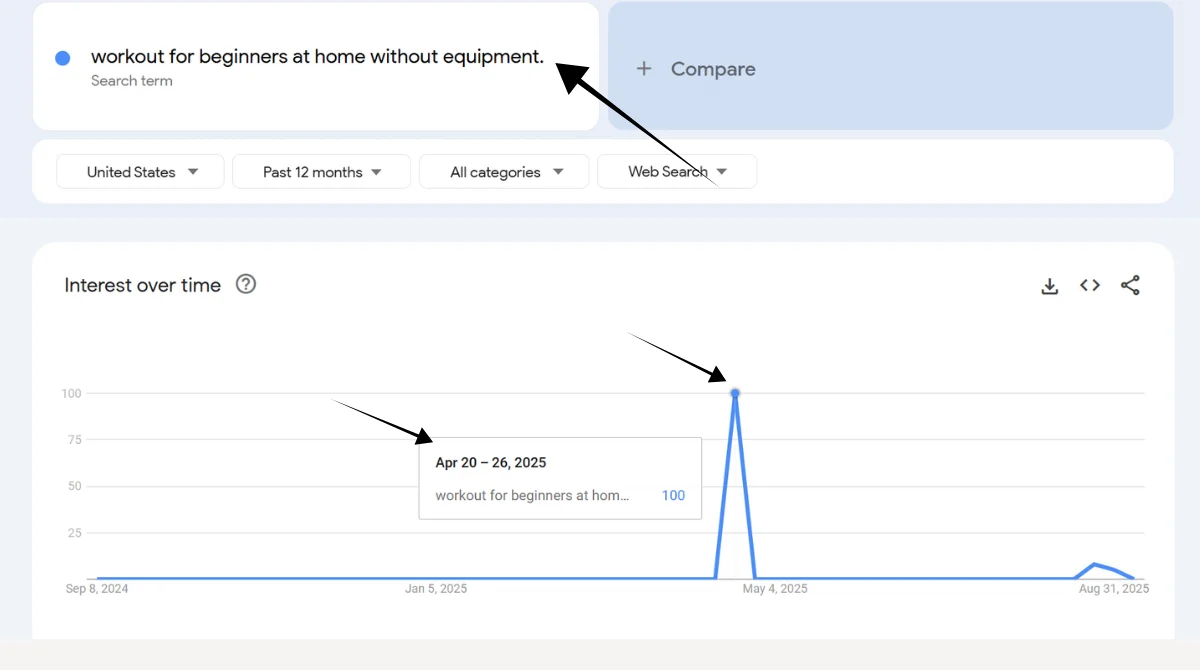
8. Use Google Trends for YouTube and Social Media Content
Google Trends is not just for blogs. You can also use it to create YouTube videos, Instagram posts, or TikTok content.
For example, if “morning routine” is trending, you can create a YouTube video titled “10-Minute Morning Routine for Productivity”.
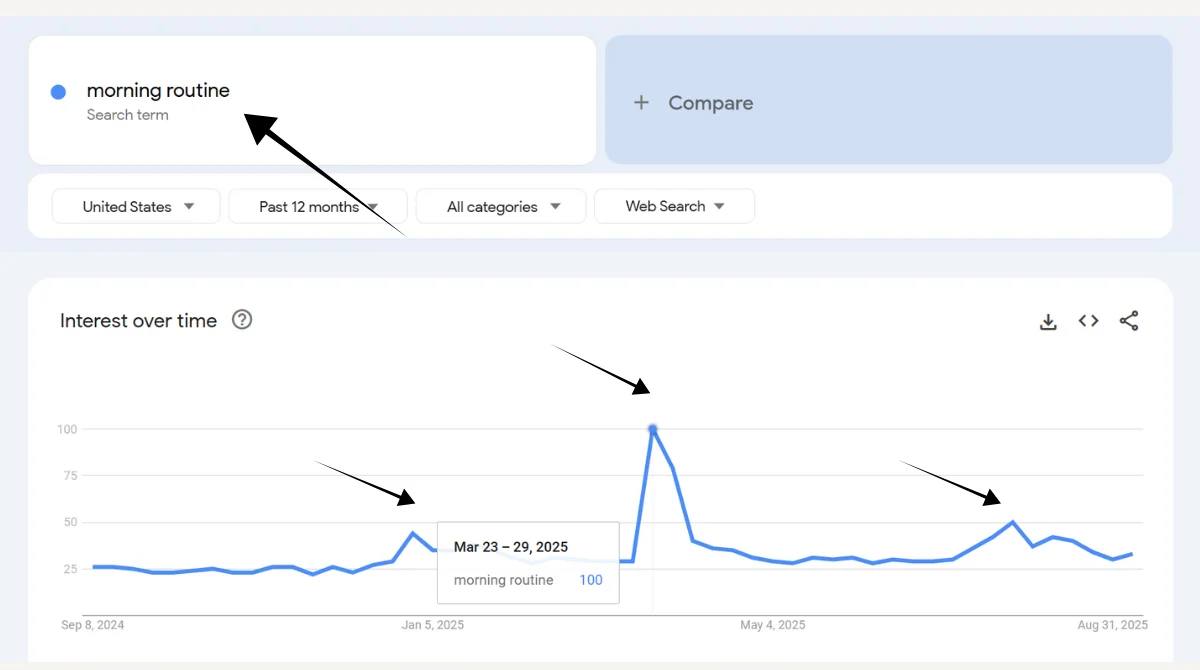
Similarly, trending queries like “AI tools” can inspire you to make short social media videos explaining those tools.
Pro Tips to Get the Best from Google Trends
- Always compare multiple keywords to pick the best one for SEO.
- Use filters (country, category, time range) for more accurate data.
- Look for breakout topics (100% growth) in “related queries.” These are often new trends.
- Combine with SEO tools like Google Keyword Planner or SEMrush for deeper analysis.
- Plan a content calendar around seasonal spikes.
Example Content Ideas Using Google Trends
Let’s say you run a blog about food. Here’s how you can use Google Trends:
- Search “healthy recipes” → See interest trend.
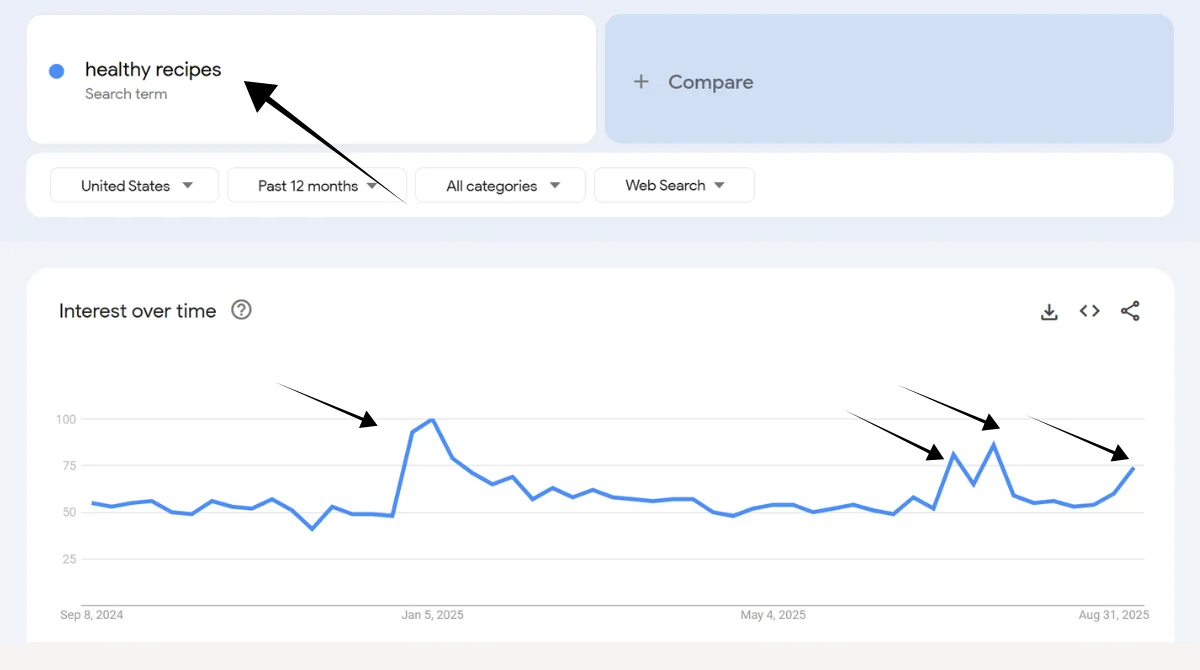
- Check related queries → “cottage cheese recipes,” “healthy recipes heartarkable,” “Quick breakfast”.
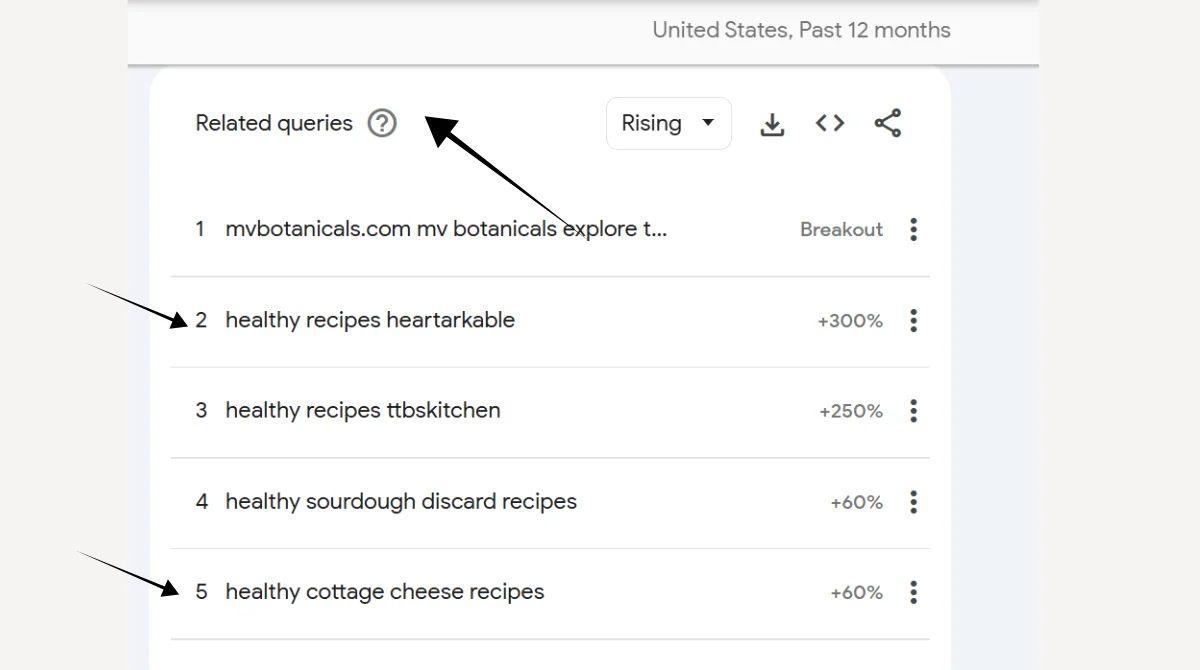
- Compare “keto diet” vs “paleo diet” → Pick the more popular.
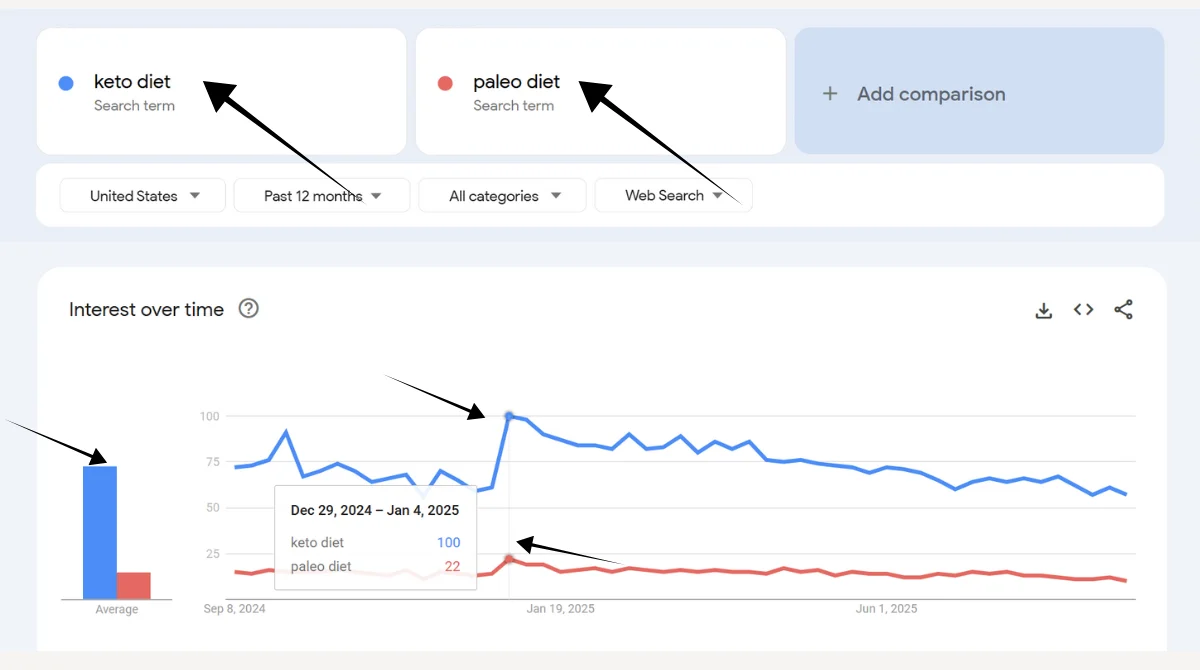
- Look at seasonal trends → “Pumpkin spice recipes” trending in October.
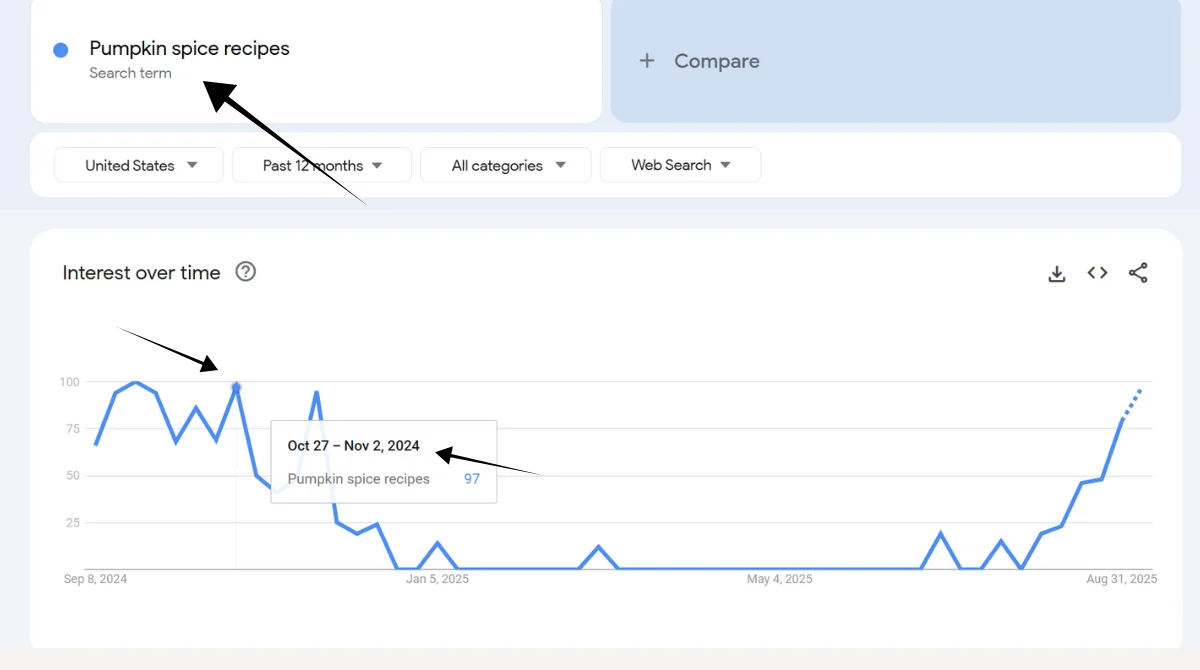
- Check location → “BBQ recipes” trending more in Texas than New York.
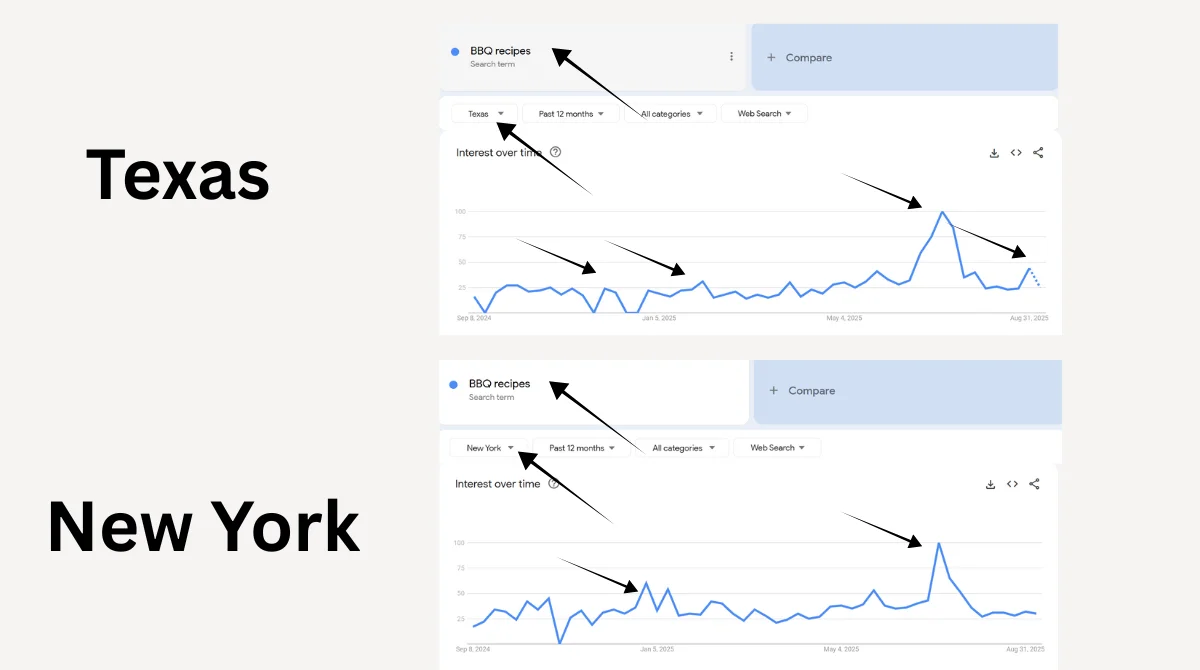
With just a few searches, you now have at least 5–10 content ideas that are already in demand.
Benefits of Using Google Trends for Content Strategy
- Save time by knowing what’s popular instead of guessing.
- Improve SEO by targeting growing keywords.
- Get more traffic by creating trending and seasonal content.
- Stay ahead of competitors by spotting new topics early.
- Build authority by always delivering fresh and relevant content.
Final Thoughts
Google Trends is more than just a keyword tool; it’s a content idea machine. By checking trending topics, related queries, seasonal patterns, and keyword comparisons, you can create content that your audience truly wants.
Whether you are writing blogs, uploading YouTube videos, or managing social media, Google Trends helps you find the right ideas at the right time. The best part? It’s completely free and easy to use.
So, the next time you feel stuck and can’t think of new content, just open Google Trends. Your next viral blog post or video idea is waiting for you there.


